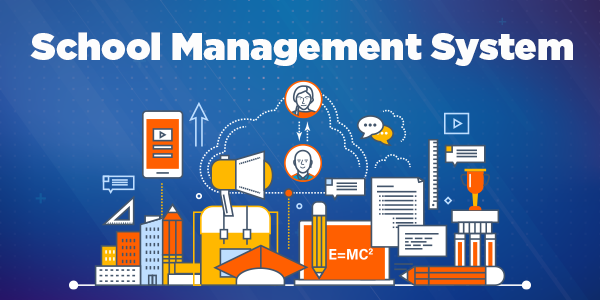
School Management Software:
Empowering Educational Institutions
Itis a comprehensive digital solution designed to streamline and automate various administrative, academic, and operational tasks within educational institutions. It serves as a centralized platform connecting administrators, teachers, students, and parents, fostering better communication and efficiency.
Key Benefits of Implementing School Management Software:
Enhanced Efficiency: Automates time-consuming manual tasks such as attendance tracking, grading, scheduling, and fee management, freeing up staff to focus on more critical activities like teaching and student support. For instance, teachers can take attendance digitally in seconds, and administrators can generate automated reports with a few clicks.
Improved Communication and Collaboration: Facilitates seamless communication between all stakeholders through features like messaging portals, email and SMS integration, and parent-teacher communication channels. This ensures that everyone stays informed about important updates, student progress, and school events.
Centralized Data Management: Provides a single, secure repository for all school-related data, including student records, academic history, financial information, and staff details. This eliminates the need for cumbersome paperwork and ensures easy access to accurate and up-to-date information for authorized users. Better Data Security: Offers robust security measures, including data encryption and role-based access controls, to protect sensitive student and staff information from unauthorized access or data breaches. Regular data backups ensure data recovery in case of system failures.
Cost Reduction: Reduces the need for paper-based processes, minimizes administrative errors, and optimizes resource utilization, leading to significant cost savings in the long run. For example, online fee payment systems reduce the administrative burden of handling cash and checks.
Enhanced Reporting and Analytics: Enables the generation of detailed reports on various aspects of school operations, such as student performance, attendance patterns, and financial status. These insights help school leaders make data-driven decisions for continuous improvement.
Increased Parent Involvement: Provides parents with access to their child’s academic progress, attendance records, and fee status through dedicated portals. This fosters greater parental engagement in their child’s education.
Streamlined Admissions Process: Automates the entire admission cycle, from online application submission to document management and enrollment, making the process more efficient for both the school and prospective parents.
Essential Features of School Management Software:
Student Information System (SIS): Manages comprehensive student data, including personal details, academic history, attendance, health records, and extracurricular activities.
Attendance Management: Tracks student and staff attendance digitally, generates attendance reports, and can send automated notifications to parents about absences.
Gradebook Management: Allows teachers to record and manage student grades, calculate averages, and generate report cards.
Timetable and Scheduling: Automates the creation of class schedules, manages teacher assignments, and helps avoid scheduling conflicts.
Fee Management: Facilitates online fee collection, generates invoices and receipts, sends payment reminders, and manages fee records.
Communication Tools: Includes messaging systems, email integration, and notification features for effective communication between school, students, and parents.
Parent and Student Portals: Provide secure online access for parents and students to view grades, attendance, assignments, school announcements, and other relevant information.
Exam and Result Management: Manages the examination process, from scheduling exams to generating and publishing results online.
Library Management: Tracks library resources, manages book borrowing and returns, and maintains a digital catalog. Human Resources and Payroll: Manages staff information, attendance, payroll, and leave applications. Transportation Management: Tracks school bus routes, manages student transportation details, and can provide GPS tracking for safety.
Learning Management System (LMS) Integration (Optional): Some advanced systems integrate LMS features to manage online learning resources, assignments, and assessments.
Types of School Management Software:
- Cloud-Based: Hosted on remote servers and accessible via the internet. Offers benefits like scalability, automatic updates, and accessibility from anywhere.
- On-Premise: Installed on the school’s own servers. Provides greater data control but requires in-house IT infrastructure and maintenance.
- ERP-Based: Integrates various school functions into a single, comprehensive platform, covering administration, academics, and finance.
- Mobile-App-Based: Offers mobile applications for students, parents, and teachers to access information and perform tasks on the go.
- Specialized Modules: Some schools may opt for standalone software for specific functions like fee management, library management, or student information management, although integrated systems are generally more efficient.
In conclusion, school management software has become an indispensable tool for modern educational institutions. By automating tasks, improving communication, and centralizing data, it empowers schools to operate more efficiently, enhance the learning environment, and foster stronger connections within the school community.
